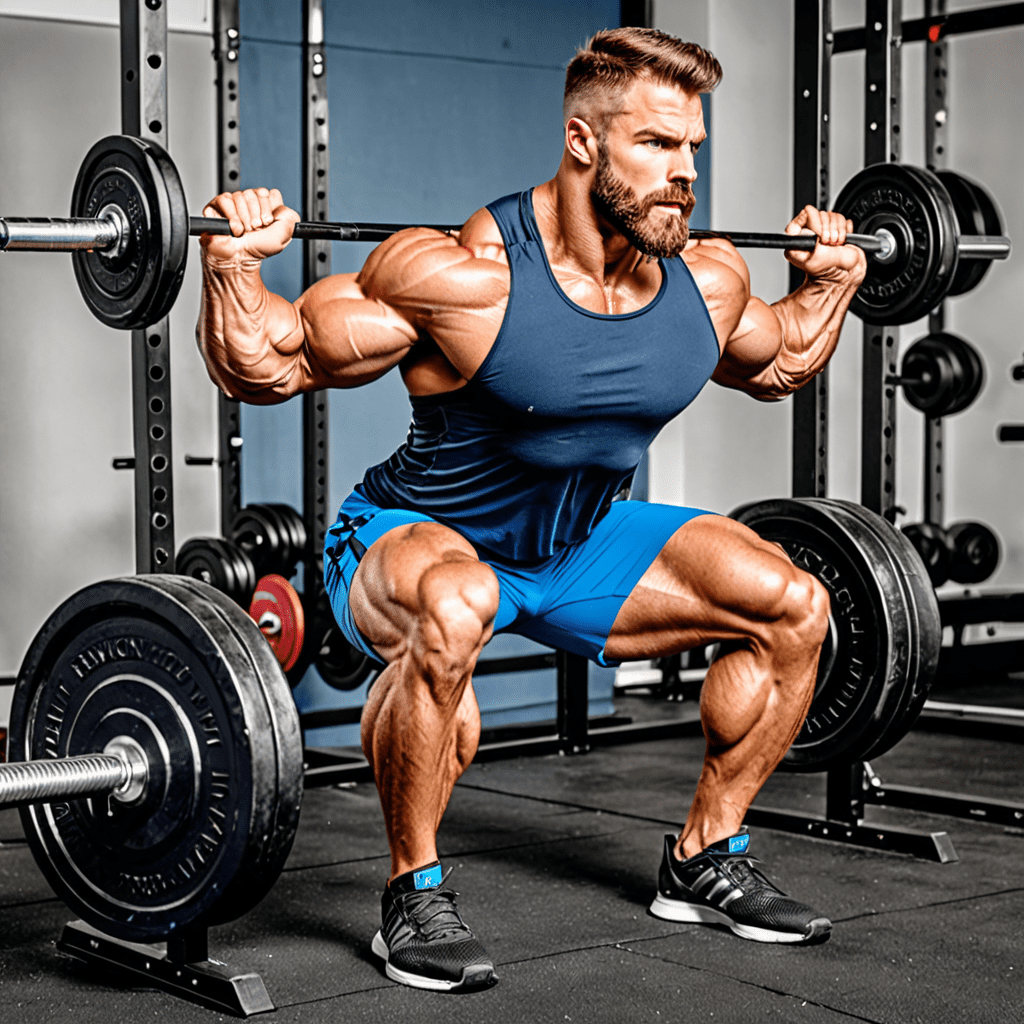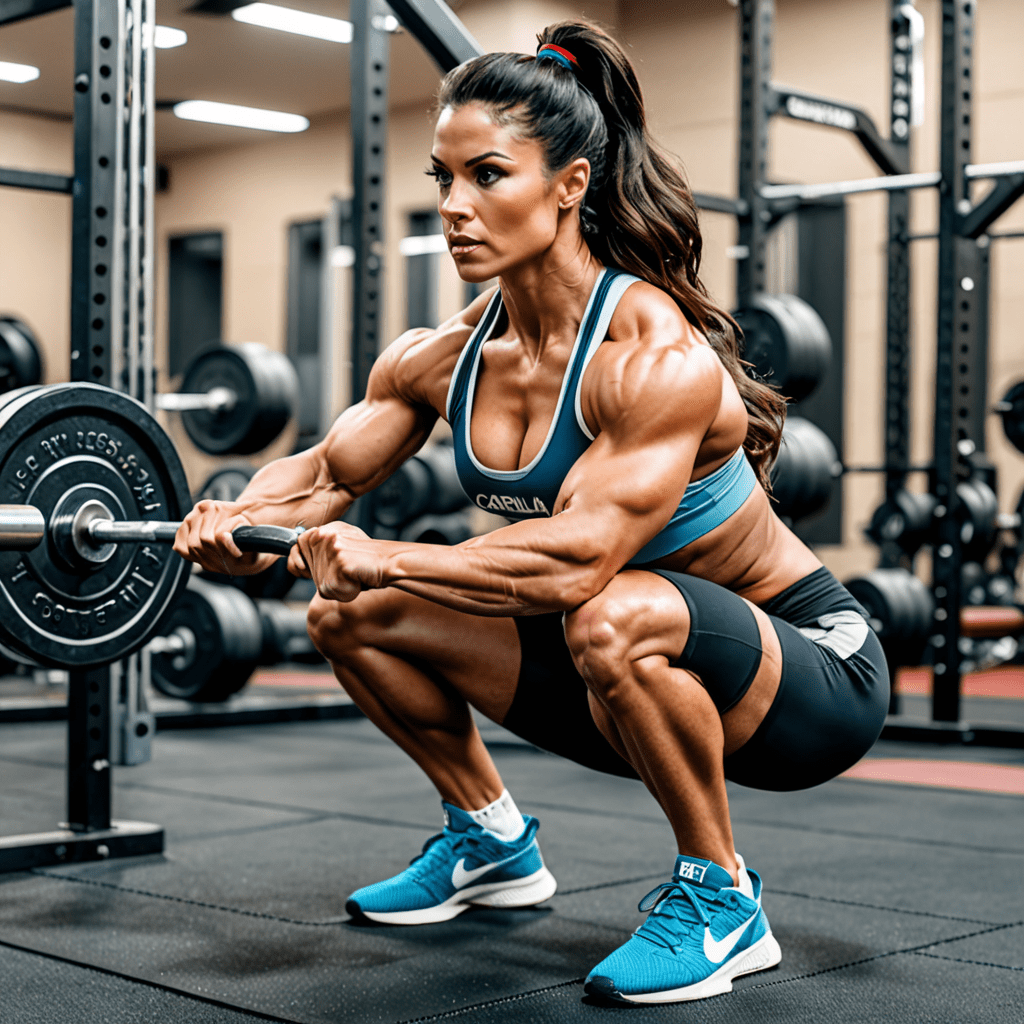
Maximize Your Leg Muscles with Reverse Hack Squat Exercise
If you’re looking to build strong and defined leg muscles, the reverse hack squat exercise might be just what you need. This exercise primarily targets your quadriceps, hamstrings, and glutes while also engaging your calf muscles. In this blog post, we’ll explore what exactly the reverse hack squat works and how you can incorporate it into your workout routine for maximum gains.
Understanding the Reverse Hack Squat Exercise
The reverse hack squat is a variation of the traditional hack squat exercise. It involves using a hack squat machine, which typically has a platform on a track that allows you to perform the movement comfortably. Unlike the traditional hack squat, where you push the weight up and away from your body, the reverse hack squat requires you to push the weight down and towards your body.
Targeted Muscles
- Quadriceps: The quadriceps muscles, located in the front of your thighs, are the primary muscles worked during the reverse hack squat. These muscles are responsible for knee extension and play a crucial role in activities like walking, running, and jumping.
Hamstrings: The hamstrings, located at the back of your thighs, also benefit from the reverse hack squat exercise. These muscles work in opposition to the quadriceps, assisting in knee flexion and hip extension. Strengthening your hamstrings can improve your overall leg strength and help prevent injuries.
Glutes: Your glutes, or gluteal muscles, which include the gluteus maximus, medius, and minimus, are activated during the reverse hack squat. These muscles are responsible for hip extension and play a significant role in movements such as squatting, lunging, and jumping.
Benefits of Reverse Hack Squats
Incorporating reverse hack squats into your leg workout routine can offer several benefits:
- Increased Muscle Strength: The reverse hack squat targets multiple muscle groups simultaneously, leading to overall leg strength gains. By progressively challenging yourself with increased weight and reps, you can continuously stimulate muscle growth.
Improved Lower Body Functionality: Stronger quads, hamstrings, and glutes contribute to better lower body functionality, allowing you to perform daily activities with greater ease and efficiency. Whether it’s climbing stairs or carrying heavy objects, a stronger lower body can make a significant difference.
Enhanced Athletic Performance: As the reverse hack squat targets major leg muscle groups, it can improve your athletic performance in various sports and activities. Whether you’re a runner, cyclist, or participate in team sports, stronger leg muscles can enhance your power, speed, and agility.
Injury Prevention: Strengthening the muscles of your lower body, especially the quadriceps and hamstrings, can help prevent common leg injuries. Stronger muscles provide better support and stability to your joints, reducing the risk of strains, sprains, and tears.
Muscle Symmetry: Building a well-balanced physique is important, and the reverse hack squat can contribute to developing symmetrical leg muscles. By working different muscle groups in your legs, you can address any imbalances and achieve a more aesthetic appearance.
How to Perform Reverse Hack Squats
To perform reverse hack squats correctly, follow these steps:
- Adjust the machine: Set the appropriate weight on the hack squat machine and adjust the seat to align your shoulders with the machine’s handles.
- Position yourself: Stand on the platform with your feet shoulder-width apart, toes pointed slightly outward. Ensure your back is against the pad and your hands are gripping the handles for stability.
- Execute the movement: Lower the platform by bending your knees and hips, keeping your back straight and your core engaged. Focus on pushing the weight down and towards your body. Stop when your knees are at a 90-degree angle.
- Reverse the movement: Push the weight back up using controlled force, extending your knees and hips until your legs are almost fully straight but not locked.
- Repeat: Perform the desired number of repetitions according to your fitness level and goals.
- Safety precautions: Always maintain proper form throughout the exercise to avoid unnecessary strain on your joints and lower back. If you’re new to the reverse hack squat, consider starting with lighter weights to master the technique before progressing to heavier loads.
Frequently Asked Questions (FAQ)
Q: Can beginners perform reverse hack squats?
A: Yes, beginners can perform reverse hack squats. It is crucial to start with lighter weights and focus on mastering proper form before gradually increasing the load.
Q: Are reverse hack squats suitable for individuals with knee or back issues?
A: Individuals with knee or back issues should consult with a healthcare professional before attempting reverse hack squats or any new exercise. Modifications or alternative exercises may be recommended to avoid aggravating existing conditions.
Q: How often should I include reverse hack squats in my leg workout routine?
A: The frequency of reverse hack squats in your leg workout routine depends on your overall training program and goals. However, it is generally recommended to allow sufficient rest and recovery for your leg muscles by incorporating a day or two of rest between sessions.
Q: Can I do reverse hack squats at home without a machine?
A: The reverse hack squat typically requires a hack squat machine. However, if you don’t have access to this equipment, you can try alternative exercises such as barbell squats, lunges, or step-ups to target similar muscle groups.
Q: Are there any variations of the reverse hack squat?
A: Yes, there are variations of the reverse hack squat that can offer additional challenges or target specific muscles differently. Some options include using different foot positions (wide stance or narrow stance) or altering the tempo of the movement.
In conclusion, the reverse hack squat exercise is an excellent addition to your leg workout routine, targeting your quadriceps, hamstrings, glutes, and calf muscles. By incorporating this compound movement with proper form and gradually increasing the intensity, you can maximize your leg muscle gains, improve functionality, prevent injuries, and enhance athletic performance. Remember to consult with a fitness professional if you have any concerns or questions specific to your individual needs or condition. Get ready to take your leg training to new heights with reverse hack squats!


